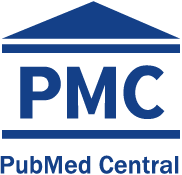Genomic diversity of uropathogenic Escherichia coli in clinical isolates from six latin american countries, 2018-2023
DOI:
https://doi.org/10.17843/rpmesp.2025.422.14299Keywords:
Escherichia coli, Uropathogen, UPEC, Bacterial Resistance, Molecular EpidemiologyAbstract
Objective. To genetically characterize clinical isolates of uropathogenic Escherichia coli (UPEC) from hospitals in Peru and contextualize them against 127 additional UPEC genomes reported in six Latin American countries between 2018 and 2023. Materials and methods. The genomes of 16 Peruvian UPEC isolates were sequenced, assembled and supplemented with 127 genomes available in the NCBI public database. Serotypes, sequence types (STs), antimicrobial resistance (AMR) genes, and resistance-associated mutations were identified. A phylogenetic analysis was also conducted in order to determine evolutionary relations and distribution in phylogroups. Results. The ST131 clone was the most prevalent (42.7%), followed by ST1193 (13.3%). Phylogroup B2 was widely predominant (83.2%), with serotype O25:H4 standing out. The resistance genes
blaTEM-1, blaCTX-M-15, and blaCTX-M-27 were identified with high frequency, as well as mutations in gyrA and parC associated with fluoroquinolone resistance, especially in the ST131 clone. Conclusion. Our findings show high circulation of high-risk UPEC clones, such as ST131 and ST1193, in Latin America, along with a notable burden of genes and mutations linked to multidrug resistance, highlighting the need to strengthen regional genomic surveillance.
Downloads
References
Rodriguez-Angeles M. Principales características y diagnóstico de los grupos patógenos de Escherichia coli. Salud Pública México. 2002; 1;44. doi: 10.1590/S0036-36342002000500011.
Agarwal J, Srivastava S, Singh M. Pathogenomics of uropathogenic Escherichia coli. Indian J Med Microbiol. 2012; 30(2):141–9. doi:
4103/0255-0857.96657.
Spurbeck RR, Dinh PC, Walk ST, Stapleton AE, Hooton TM, Nolan LK, et al. Escherichia coli Isolates That Carry vat, fyuA, chuA, and yfcV Efficiently Colonize the Urinary Tract. Infect Immun. 2012; 80(12):4115–22. doi: 10.1128/IAI.00752-12.
Yang X, Chen H, Zheng Y, Qu S, Wang H, Yi F. Disease burden and longterm trends of urinary tract infections: A worldwide report. Front Public Health. 2022; 10:888205. doi: 10.3389/fpubh.2022.888205.
Whelan S, Lucey B, Finn K. Uropathogenic Escherichia coli (UPEC)-Associated Urinary Tract Infections: The Molecular Basis for
Challenges to Effective Treatment. Microorganisms. 2023; 11(9):2169. doi: 10.3390/microorganisms11092169.
Terlizzi ME, Gribaudo G, Maffei ME. UroPathogenic Escherichia coli (UPEC) Infections: Virulence Factors, Bladder Responses, Antibiotic,
and Non-antibiotic Antimicrobial Strategies. Front Microbiol. 2017; 8:1566. doi: 10.3389/fmicb.2017.01566.
Kot B. Antibiotic Resistance Among Uropathogenic Escherichia coli. Pol J Microbiol. 2019; 68(4):403–15. doi: 10.33073/pjm-2019-048.
Loyola S, Concha-Velasco F, Pino-Dueñas J, Vasquez-Luna N, Juarez P, Llanos C, et al. Antimicrobial Resistance Patterns and Dynamics of Extended-Spectrum β-Lactamase-Producing Uropathogenic Escherichia coli in Cusco, Peru. Antibiotics. 2021; 10(5):485. doi: 10.3390/antibiotics10050485.
Pavez M, Troncoso C, Osses I, Salazar R, Illesca V, Reydet P, et al. High prevalence of CTX-M-1 group in ESBL-producing enterobacteriaceae infection in intensive care units in southern Chile. Braz J Infect Dis Off Publ Braz Soc Infect Dis. 2019; 23(2):102–10. doi: 10.1016/j.bjid.2019.03.002.
Shenagari M, Bakhtiari M, Mojtahedi A, Atrkar Roushan Z. High frequency of mutations in gyrA gene associated with quinolones resistance in uropathogenic Escherichia coli isolates from the north of Iran. Iran J Basic Med Sci. 2018; 21(12):1226–31. doi: 10.22038/ijbms.2018.31285.7539.
Garallah ET, Al-Jubori SS. Molecular detection of glpT and uhpT genes as fosfomycin pathways in UTI infection patients. Gene Rep. 2020; 21:100930. doi: 10.1016/j.genrep.2020.100930.
Lin JC, Kristopher Siu LK, Chang FY, Wang CH. Mutations in the pmrB gene constitute the major mechanism underlying chromosomally encoded colistin resistance in clinical Escherichia coli. J Glob Antimicrob Resist. 2024; 38:275–80. doi: 10.1016/j.jgar.2024.06.013.
Yu L, Li W, Xue M, Li J, Chen X, Ni J, et al. Regulatory Role of the Two-Component System BasSR in the Expression of the EmrD Multidrug Efflux in Escherichia coli. Microb Drug Resist Larchmt N. 2020; 26(10):1163–73. doi: 10.1089/mdr.2019.0412.
Bunduki GK, Heinz E, Phiri VS, Noah P, Feasey N, Musaya J. Virulence factors and antimicrobial resistance of uropathogenic Escherichia coli (UPEC) isolated from urinary tract infections: a systematic review and meta-analysis. BMC Infect Dis. 2021; 21(1):753. doi: 10.1186/s12879-021-06435-7.
Al-Guranie DR, Al-Mayahie SM. Prevalence of E. coli ST131 among Uropathogenic E. coli Isolates from Iraqi Patients in Wasit Province,
Iraq. Int J Microbiol. 2020; 2020:8840561. doi: 10.1155/2020/8840561.
Kudinha T, Johnson JR, Andrew SD, Kong F, Anderson P, Gilbert GL. Escherichia coli Sequence Type 131 as a Prominent Cause of
Antibiotic Resistance among Urinary Escherichia coli Isolates from Reproductive-Age Women. J Clin Microbiol. 2013; 51(10):3270–6.
doi: 10.1128/JCM.01315-13.
Pitout J, Peirano G, Chen L, DeVinney R, Matsumura Y. Escherichia coli ST1193: Following in the Footsteps of E. coli ST131. Antimicrob Agents Chemother. 2022; 66. doi: 10.1128/aac.00511-22.
Marcos-Carbajal P, Salvatierra G, Yareta J, Pino J, Vásquez N, Diaz P, et al. Caracterización microbiológica y molecular de la resistencia
antimicrobiana de Escherichia coli uropatógenas de hospitales públicos peruanos. Rev Peru Med Exp Salud Pública. 2021; 38:119–23. doi:
17843/rpmesp.2021.381.6182.
Alqasim A, Abu Jaffal A, Alyousef A. Prevalence and molecular characteristics of sequence type 131 clone among clinical uropathogenic Escherichia coli isolates in Riyadh, Saudi Arabia. Saudi J Biol Sci. 2020; 27(1):296–302. doi: 10.1016/j.sjbs.2019.09.020.
Whitmer GR, Moorthy G, Arshad M. The pandemic Escherichia coli sequence type 131 strain is acquired even in the absence of antibiotic exposure. PLoS Pathog. 2019; 15(12):e1008162. doi: 10.1371/journal.ppat.1008162.
García-Meniño I, Lumbreras P, Lestón L, Álvarez-Álvarez M, García V, Hammerl JA, et al. Occurrence and Genomic Characterization
of Clone ST1193 Clonotype 14-64 in Uncomplicated Urinary Tract Infections Caused by Escherichia coli in Spain. Microbiol Spectr. 2022;
(3):e0004122. doi: 10.1128/spectrum.00041-22.
Nowrouzian FL, Wold AE, Adlerberth I. Escherichia coli Strains Belonging to Phylogenetic Group B2 Have Superior Capacity to Persist in the Intestinal Microflora of Infants. J Infect Dis. 2005; 191(7):1078–83. doi: 10.1086/427996.
Shahbazi R, Salmanzadeh-Ahrabi S, Aslani MM, Alebouyeh M, Falahi J, Nikbin VS. The genotypic and phenotypic characteristics contributing to high virulence and antibiotics resistance in Escherichia coli O25-B2-ST131 in comparison to non- O25-B2-ST131. BMC Pediatr. 2023; 23(1):59. doi: 10.1186/s12887-023-03866-w.
Rodriguez AOG, Pastor HJB, Villafuerte CAG, Barrón YLM de, Miranda DVHC de, Cunza SS. Clasificación filogenética de Escherichia coli
uropatógena y respuesta inmunometabólica en adultos mayores con infección urinaria en casas de reposo. Arch Med Col. 2019;19(2):238–46.
Ali SA, Al-Dahmoshi HOM. Detection of Efflux Pumps Gene and Relation with Antibiotics Resistance in Uropathogenic Escherichia coli
(UPEC) Isolated from Patients with Cystitis. Iraqi J Sci. 2022; 2388–97. doi: 10.24996/ijs.2022.63.6.7.
Boroumand M, Naghmachi M , Ghatee M A. Detection of Phylogenetic Groups and Drug Resistance Genes of Escherichia coli Causing Urinary Tract Infection in Southwest Iran. Jundishapur J Microbiol. 2021; 14(2):e112547. doi: 10.5812/jjm.112547.
Tchesnokova V, Radey M, Chattopadhyay S, Larson L, Weaver JL, Kisiela D, et al. Pandemic fluoroquinolone resistant Escherichia coli clone ST1193 emerged via simultaneous homologous recombinations in 11 gene loci. Proc Natl Acad Sci. 2019; 116(29):14740–8. doi: 10.1073/pnas.1903002116.
Zakaria AS, Edward EA, Mohamed NM. Genomic Insights into a Colistin-Resistant Uropathogenic Escherichia coli Strain of O23:H4-ST641 Lineage Harboring mcr-1.1 on a Conjugative IncHI2 Plasmid from Egypt. Microorganisms. 2021; 9(4):799. doi: 10.3390/microorganisms9040799.
Downloads
Published
Issue
Section
License
Copyright (c) 2025 Francesca Caballero, Anne Martinez-Ventura, Diego Cuicapuza, Alex Fajardo-Loyola, Rosmery Gutierrez-Ajalcriña, Javier Soto-Pastrana, Percy Asmat-Marrufo, Evelyn Barco-Yaipen de Vera, Henry Meza-Fernandez, Mario Chambi-Quispe, Jimena Pino-Dueñas, Nicomedes Laura-Rivas, Alexander Briones-Alejo, Pilar Diaz-Rengifo, Carlos Peralta-Siesquen, Guillermo Salvatierra, Pablo Tsukayama, Pool Marcos-Carbajal

This work is licensed under a Creative Commons Attribution 4.0 International License.




























